Balassagyarmat
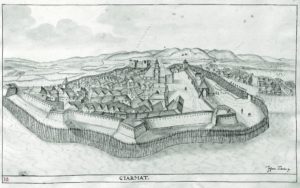
Balassagyarmat (Balážske Ďarmoty, Jahrmarkt) used to be the headquarter of Nógrád County for more than one and a half-century, it is a town with 17,000 inhabitants, near the Slovakian border.
The town has a rich history, as it is located at a strategic crossing place on the southern bank of the Ipoly River. Its castle was guarding a junction of trade routes that connected the settlements of the Hungarian Great Plains with the Mining Towns of Upper Hungary. The inhabitants of Balassagyarmat gained the rank of the „Bravest Town” (Civitas Fortissima) in 1919 when they successfully resisted the attack of the Czechoslovak Legio.
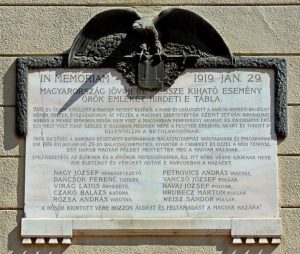
Due to its favorable location, Balassagyarmat has been populated since the Bronz Age. When the Magyar tribes entered the Carpathian Basin, Grand Chief Árpád sent his two generals, Zoárd and Kadosa to take the northern parts of Hungary. After the occupation of Nógrád Castle, Zoárd and Kadosa took control over the Balassagyarmat region. The name of the town derives from the name of Gyarmat, it was one of the seven Magyar tribes who came with Árpád. The Gyarmat tribe settled in the Balassagyarmat region.
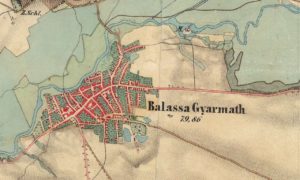
In 1241, the Mongols invaded the country, destroying completely the settlement. After the Mongols withdrew the following year, stone castles were built all over the country at the urging of King Bela IV. He was anticipating a second Mongol invasion, and he expected to stop them with the help of stone castles.
The first medieval castle of Balassagyarmat developed from a watchtower established after the Mongolian invasion. At this time, it was called just Gyarmat. We know, that it was the king’s property, and it used to belong to Hont castle in 1244. King Béla IV gave these estates to Miklós, son of Detre of the Kacsics Clan in 1246. Detre became the ancestor of the Balassa family. In the same document, the king ordered the construction of a castle in Gyarmat, which was completed around 1260. It was how Detre, the ancestor of the Balassa family built the first fortified stone tower in Gyarmat along the Ipoly River. The construction was certainly ready in 1274, as it was mentioned in a contemporary charter.

Later Péter (aka Furró), one of the members of the Balassa family was accused of infidelity so King László IV took the castle from him. However, the new owner, Comes Demeter of Pozsony and Zólyom Counties could not take the property as the previous owner didn’t cede it. We came to know about this incident as it was mentioned in a document in 1290. According to it, Demeter had to take the residential tower of Gyarmat by force. As it was, Demeter was also related to the Balassa family so the property remained in their hands.
They didn’t let it slip from their hands. In 1374, the Balassa family received a new letter of donation from King Lajos the Great so the town remained the property of the family. The only change was that the castle was in the king’s hand who usually appointed the members of the Balassa family as his castellans, though. The settlement developed into a market town by the 15th century, but despite its closely integrated castle, it had no military significance. Officially speaking, Balassagyarmat became a market town in 1437.
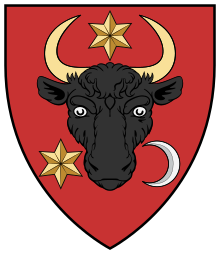
The situation changed radically after the battle of Mohács in 1526. The importance of the castles of Nógrád County, including Gyarmat castle, has been increased. The northern part of the fortification was defended by the Ipoly River, but the other defenses were hastily fortified, and the city was surrounded by a wooden palisade.
The Ottoman Turks were expanding their rule unstoppably to the north and in 1541 they took Buda as well. In 1544, 500 soldiers were guarding Gyarmat castle, under the command of Horváth Bertalan. (Please, note that I use the Oriental name order for Hungarians where family names come first.)
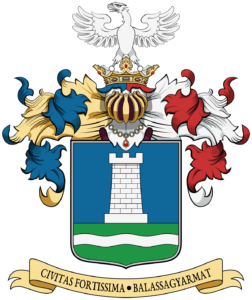
The enemy took the nearby Szanda castle and destroyed it in 1551. Captain Horváth heard of the approaching Turks in 1552 and fled from the castle, leaving it empty. It was how Pasha Hadim Ali of Buda Castle took it without a fight. He set it on fire and demolished it at once. The castle was recaptured by the royal troops only in the 1593 campaign of Chief Captain Kristóf Tiefenbach of Kassa (Košice, Kaschau) who was aided by the troops of Pálffy Miklós and Homonnay István.
They could easily take the small castle as the Turk garrison set it on fire and fled when the Christian army was coming. Colonel Philip Morgentaller was appointed as captain of the castle, he immediately began repairing and restoring the damaged walls. Let us also commemorate Balassi Bálint, the great Renaissance poet and warrior who lost his life at the siege of Esztergom in 1594. Here is more about his life:
https://www.hungarianottomanwars.com/essays/balassi-balint-1554-1594/
Below is a commemorative plaque to Balassi Bálint (1554–1594) Hungarian poet and warrior. It was affixed to the wall of the High school that bears his name. Quote: “The beautiful confines of your homeland are truncated everywhere.” (Balassagyarmat, Deák Ferenc Street Nr 17)
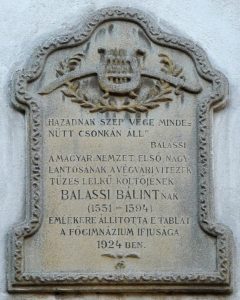
The Imperial guards of Gyarmat opened the gates of the castle before General Rhédey Ferenc, the commander of Prince Bocskai István of Transylvania in 1605. Nevertheless, the castle was returned to King Rudolf in 1606, according to the Treaty of Vienna in 1606. The Diets held in 1608, 1613, and 1618 ordered to reinforcement of the castle which was carried out. Despite these fortifications, the castle was occupied by Prince Bethlen Gábor’s army in 1619, but according to the peace of Nikolsburg in 1622, it was given back to the Habsburg king.

Balassagyarmat was besieged by the Turks in 1648 with an army of 4,000 men, but the cavalry of Count Ádám Forgách, the Chief Captain of Érsekújvár (Nové Zámky) castle came to the aid of the defenders, and he chased the attackers away. In 1652, Count Esterházy Ferenc was the captain of the castle, the one who fell in the battle of Vezekény. After 1652, Balassa Ferenc and his brother Imre became the chief captains of the castle. However, Imre demanded a bigger share from the leadership and the estate so there was a quarrel between them.

The Turks were able to benefit from their debate, though. The Ottoman Empire seemed to be declining but an iron-handed Grand Vizier called Köprülü Ahmed wanted to prevent this process. He launched a huge army against Hungary in 1663, his troops occupied, burned, and destroyed the smaller border castles that lay in their path.
Taking advantage of the quarrel between the Balassi brothers, the Turkish army led by Köprülü – joined by the army of Prince Apafi Mihály of Transylvania – occupied Balassagyarmat. They burned and thoroughly destroyed the castle in 1663 or 1665.
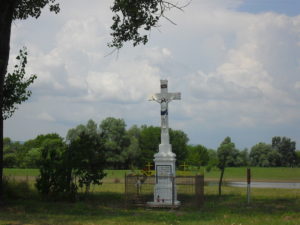
As its military significance ceased to exist, the ruined walls were not rebuilt again. During the Ottoman Wars, the area and the city became depopulated. After the end of the war, the settlement started to develop again, and it was rebuilt in 1690. Due to its favorable geographical location, the town was rapidly populated. In 1701, the fortifications of the town were blown up, according to the decree of Emperor Leopold. Later, the stones of the fortress were used for construction, so today there is hardly any trace of it above the surface.

After the First World War, the Czechoslovak legion crossed the Hungarian border in 1919 and occupied Balassagyarmat on January 15. They wanted to seize the coal basin of Borsod County. Despite the prohibition of Prime Minister Károlyi Mihály, the Hungarian soldiers stationed in the area together with the inhabitants managed to expel the occupying Czechoslovak troops on January 29. Although the Czechoslovakian state tried to take the coal mines of Borsod County during the peace negotiations of Trianon, they could not get them because Balassagyarmat did not belong to them anymore. For the heroic deeds of the citizens, the town was awarded the title of “Civitas Fortissima” (The Bravest Town), and January 29 became a public holiday in the town.

Dear Readers, I can only make this content available through small donations or by selling my books or T-shirts.
If you like my writings, please feel free to support me with a coffee here:
You can check out my books on Amazon or Draft2Digital, they are available in hardcover, paperback, or ebook:
https://www.amazon.com/dp/198020490X or at https://books2read.com/b/boYd81

My work can also be followed and supported on Patreon: Become a Patron!http://Become a Patron!





